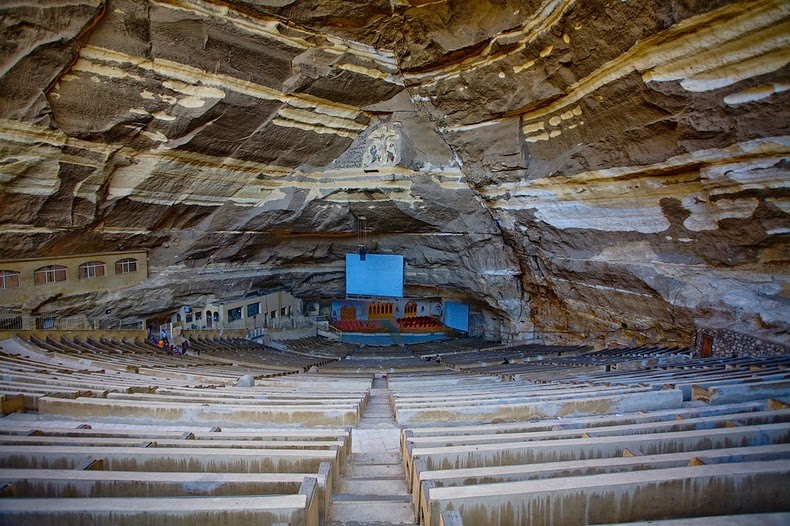
vagabondblogger
The Zabbaleen is a word which literally means "garbage people" in Egyptian Arabic. The contemporary use of the word in Egyptian Arabic is to mean "garbage collectors". In cultural contexts, the word refers to teenagers and adults who have served as Cairo's informal garbage collectors for approximately the past 70 to 80 years. The Zabbaleen are also known as Zarraba, which means "pig-pen operators." The word Zabbalīn came from the Egyptian Arabic word zebāla which means "garbage".
What to See

Gianluigi Guercia
In an area known as "Garbage City," seven beautiful cave churches unexpectedly rise against the backdrop of Mokattam hills. Located in southeast Cairo, these Coptic Christian churches were created by the Zabbaleen, a community of garbage collectors who make their living collecting and recycling 15,000 tons of garbage produced by Cairo's 17.8 million residents.

Nick A
For years, the makeshift settlements of the Zabbaleen were moved around the city trying to avoid the municipal authorities. Finally, a large group of Zabbaleen settled under the cliffs of the Mokattam or Moquattam quarries at the eastern edge of the city, which has now grown from a population of 8,000 in the early 1980s, into the largest garbage collector community in Cairo, with approximately 30,000 Zabbaleen inhabitants.

vagabondblogger
Egypt is a Muslim-majority country, but the Zabbaleen are Coptic Christians, at least, 90 percent of them are. Christian communities are rare to find in Egypt, so the Zabbaleen prefer to stay in Mokattam within their own religious community even though many of them could afford houses elsewhere.

Nick A
The local Coptic Church in Mokattam Village was established in 1975. After the establishment of the church, the Zabbaleen felt more secure in their location and only then began to use more permanent building materials, such as stone and bricks, for their homes. Given their previous experience of eviction from Giza in 1970, the Zabbaleen had lived in temporary tin huts up till that point. In 1976, a large fire broke out in Manshiyat Nasir, which led to the beginning of the construction of the first church below the Mokattam mountain on a site of 1,000 square meters. Several more churches have been built into the caves found in Mokattam, of which the Monastery of St. Simon the Tanner is the largest with a seating capacity of 20,000. In fact, the Cave Church of St. Simon in Mokattam is the largest church in the Middle East.

vagabondblogger


0 comments:
Post a Comment